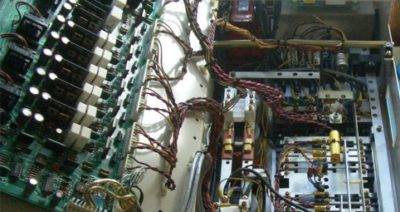Dry Ice Blasting is a Solution for Cleaning Variable Frequency Drives
When it comes to controlling the speed of AC motors, a variable frequency drive (VFD) is the solution. Everyone from manufacturing plants to construction companies to waterparks is reliant on this powerful technology to keep operations up and running. But in order to keep a VFD operating at peak levels, it must be properly maintained. And at Wickens Dry Ice Blasting, we specialize in providing businesses with the safest and most effective VFD cleaning solutions on the market.
What is a VFD Used For?
A VFD is essentially a type of motor controller that powers an electric motor by varying the voltage and frequency it supplies. Other commonly used names for VFD include adjustable frequency drive, adjustable speed drive, AC drive, variable speed drive, inverter, and microdrive.
In essence, a VFD controls the speed of a motor so that it operates at a safe and efficient manner at all times. If, for example, a specific application doesn’t need an electric motor to run at its maximum speed, the VFD automatically dials the frequency and voltage back a few notches so that it satisfies the requirements without “overdoing” it.
Precautions Needed for Cleaning a VFD
A VFD needs to be cleaned on a semi-regular basis to ensure it can continue to operate safely and efficiently. But with so many sensitive parts, precautions must be taken.
Much like other electronics and computers, there are three basic rules to cleaning a VFD:
- Keep it clean. For most VFDs, dust contamination poses the greatest risk. When dust enters into the system, it can reduce airflow and limit effectiveness. Furthermore, dust can attract and absorb moisture, which creates additional problems and increases the risk of malfunctioning.
- Keep it dry. Variable frequency drives and moisture do not mix. When exposed to moisture – whether directly or indirectly – VFD circuit boards can corrode and malfunction. Any cleaning method must avoid the use of water.
- Keep the connections tight. For a VFD to operate at peak performance, all connections must be tight. This means any cleaning method must avoid displacing wires and/or damaging components.

Benefits of Dry Ice Blasting for Cleaning VFDs
While there are multiple ways in which a VFD can be cleaned, dry ice blasting is the safest and most effective option available.
Dry ice blasting works much in the same way as a sandblaster, except that instead of shooting sand particles, the ice blaster pushes out tiny dry ice pellets. When these pellets come into contact with a warmer surface, they absorb the heat and immediately turn into carbon dioxide gas.
Benefits of dry ice blasting include:
- No moisture. Dry ice changes directly from a solid into a gas without going through a liquid phase. This means there’s no moisture or cleanup needed. It’s a totally dry cleaning method – hence the name.
- No abrasion/damage. By the time the dry ice hits the surface, it turns into a gas. So unlike sandblasting, which causes some abrasion, there’s no damage to the surface being cleaned.
- No electrical conductivity. With dry ice blasting, you don’t have to worry about electrical conductivity compromising the VFD. It’s safe and easy.




